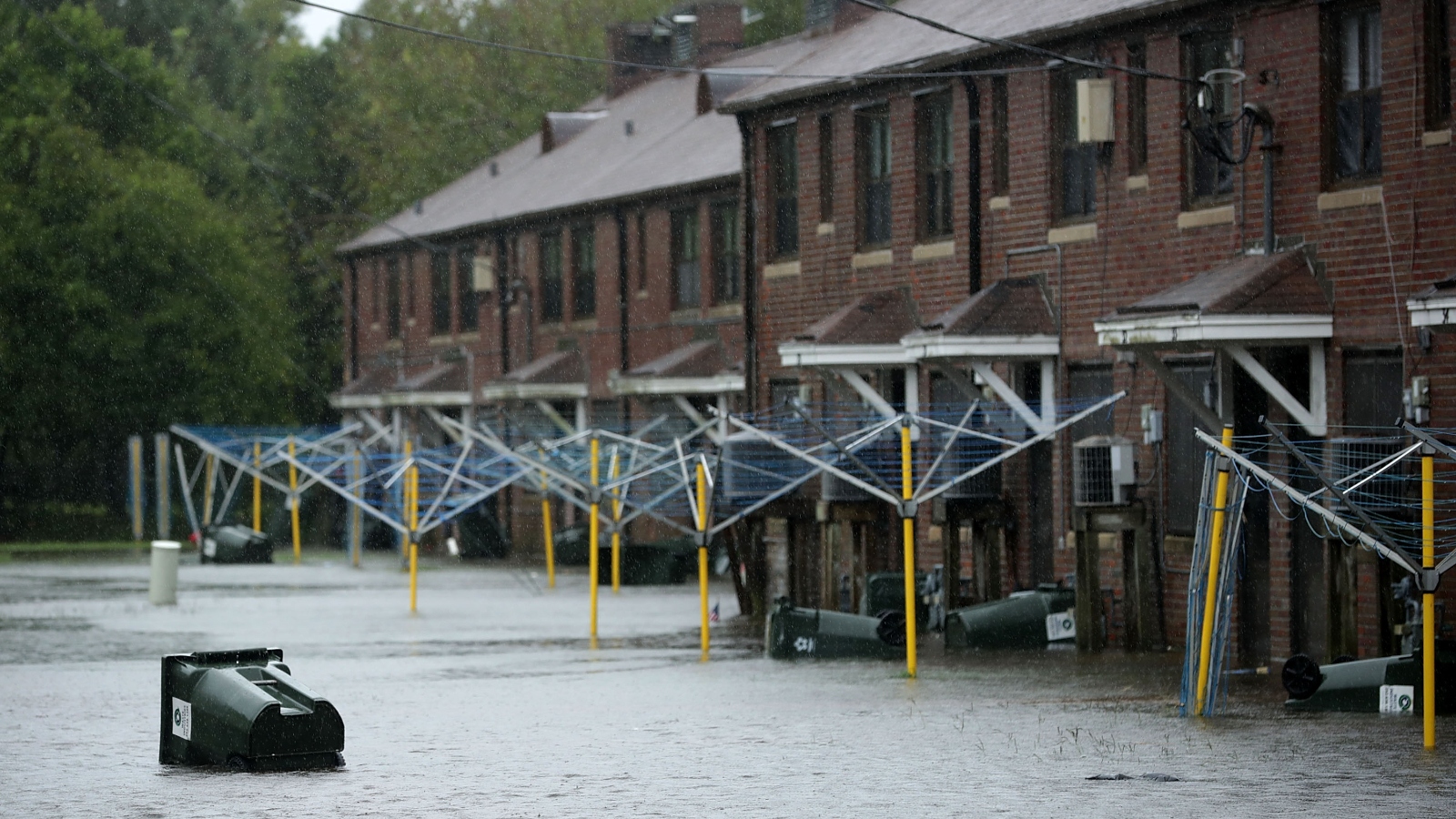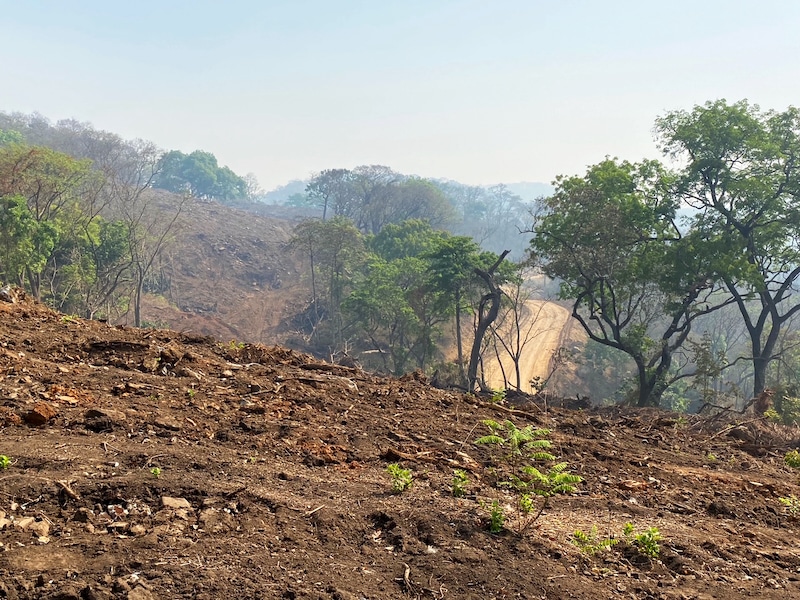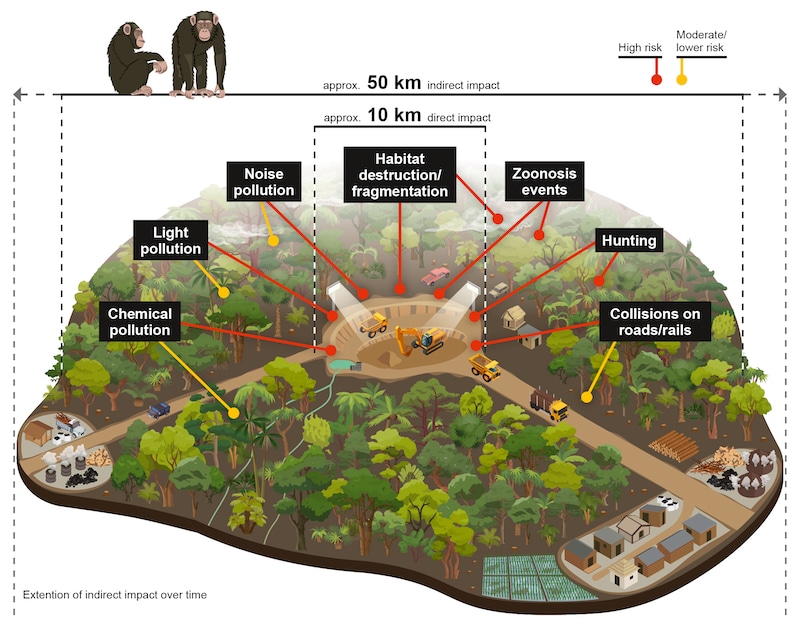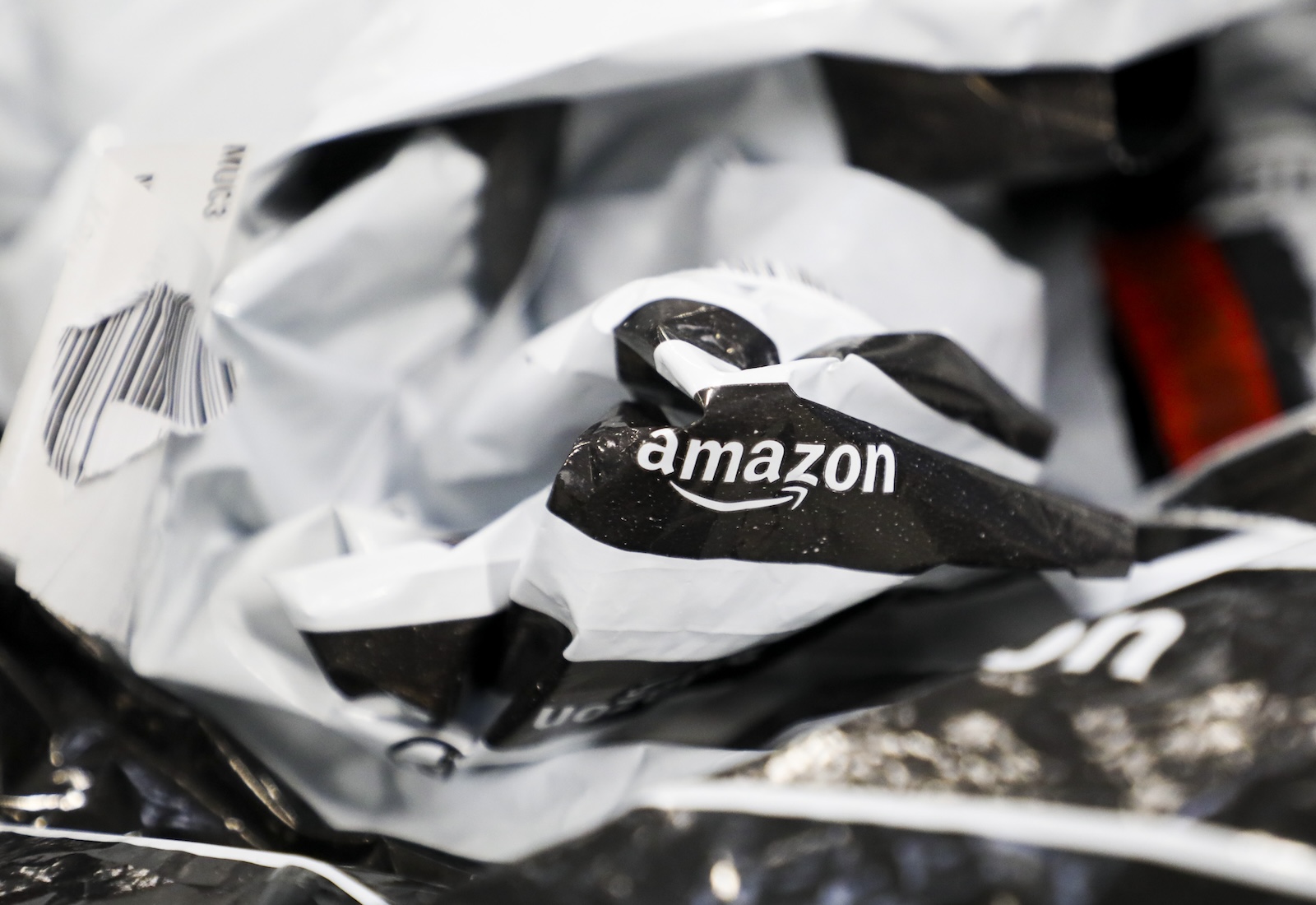This coverage is made possible through a partnership between WBEZ and Grist, a nonprofit environmental media organization. Sign up for WBEZ newsletters to get local news you can trust.
Christian Diaz hates a boxy, six-story brick building with blue and gray paneling in Logan Square, a rapidly gentrifying neighborhood on the northwest side of Chicago.
“It looks boring and uninspired,” said Diaz, the housing director at Palenque LSNA, formerly known as the Logan Square Neighborhood Association. “When people think gentrification, this is the building that comes to mind.”
The building is an example of what urban planners call Transit-Oriented Development, or TOD. The idea is that developing near transit stations leads to interconnected communities and fewer cars emitting carbon dioxide. Developers get incentives and neighbors get a walkable community. But Diaz said buildings like this — dense, tall developments catering to wealthy tenants — are accelerating gentrification in the once working-class, largely Latino neighborhood. Only 3 of the 60 units qualify as affordable housing.
“This building, thumbs down — 100 percent thumbs down,” Diaz said.
Instead, housing advocates like Diaz want TOD to evolve and become a tool to make Logan Square accessible for everyone — and to help reclaim it for people pushed out by gentrification.
“The irony is that in the pursuit of more walkable cities, we’re actually making it so that people of color in general have to be more reliant on cars,” Diaz said. As longtime residents are pushed farther and farther from the city, he points out, access to public transportation becomes limited and cars become inevitable.
Developing residential buildings near transit stops was seen by planners as a shortcut to greener, more efficient cities. But across the country the idea has been slow to take off. A recent analysis from the Urban Institute, a Washington, D.C., think tank, found that while growth near transit has expanded over the past 20 years compared to previous decades, it’s still not enough.
The analysis found that almost nine times as many housing units were added far from transit stations as opposed to near them over the past two decades.
“There are two big reasons for that: One is we haven’t built enough public transportation for the people who need it,” said Yonah Freemark, a principal research associate at the Urban Institute. “And the second is, we continue to allow development far out into the suburbs, suburban areas.”
Suburban and exurban sprawl will mean more driving, more congestion and more carbon emissions in Chicago and other major cities, according to Freemark.
Diaz’s fight in Chicago isn’t easy, but his group is starting to score some wins with new affordable housing and public spaces. In the end, success will mean marrying a drive for affordable housing to the increasingly clear need for sustainable and climate-resistant cities.

TOD as a solution picked up in earnest in Chicago around 2013 after the City Council passed an ordinance encouraging developers to build near transit. It was a race-neutral policy that resulted in little activity on the South and West sides. But off the train stations in Logan Square, for example, that meant luxury housing that left out moderate- and low-income families. In 2019, the city updated the ordinance to ensure a racial analysis is baked into any project.
“We don’t want walkable neighborhoods only for affluent individuals,” said Jannice Newson, coordinator for Elevated Chicago, a coalition of nonprofits and city agencies trying to advance equity in Transit-Oriented Development by making sure affordable housing is part of the equation.
TOD has thrived in hot markets, according to Kate Lowe, a professor of urban planning at the University of Illinois Chicago.
“That’s the thing,” Lowe said. “When we rely on the private sector, we’re going to see profit-driven actions.”
The market in Logan Square is hot. The price of a single-family home can cost $1 million. Upscale retail dots the Milwaukee Avenue corridor, a diagonal roadway that bisects the neighborhood. Since 2001, nearly half of Logan Square’s Latino population has been displaced and replaced by mostly white and upwardly mobile residents. To count as affordable housing, resident incomes must be at or below 60 percent of the area median income. In Chicago, for a family of four that comes to $66,180.
Logan Square is still gentrified, but parts of the neighborhood are now closer to transit and beginning to feel like home again. Soon the streetscape is going to be redesigned around the Logan Square Blue Line train station.
“We’re going to have more green space, we’re going to have La Placita,” Diaz said.
La placita — Spanish for plaza — emerged out of conversations with residents who wanted a Latin American-inspired public square. The development is part of a major traffic redesign of the neighborhood that was years in the making. Construction is set to begin in the coming months.
“I can’t wait, in two years, to call my mom on a Sunday morning and say, ‘Hey mom, vamos a la placita,’ and we can just walk down the street in Logan Square,” Diaz said.
It’s not just green space. Palenque LSNA is also working on developing 10 murals across neighborhood schools that commemorate the history and culture of the neighborhood.
“As we’re developing this new open, walkable space for the community, our hope is that the children will eventually come to La Placita and say, ‘Oh, wow, that’s the mural from my school. This plaza is for me.’”
Diaz is proud of the work his organization and other local partners have accomplished. He said it’s proof that it’s possible to fight — and possible to win.
“We’re here to stay part of the neighborhood,” Diaz said. “A significant part of the neighborhood, especially in the center, along the Logan Square Blue Line station, will always be working-class people and people of color.”
Right near where La Placita will sit, Diaz fixed his glasses and pointed toward a modern, seven-story building. On a former parking lot, close to a train stop, a development called the Lucy Gonzalez Parsons apartment building has 100 units — all affordable housing.
“This one gets two thumbs up,” Diaz said.
This story was originally published by Grist with the headline In Chicago, one neighborhood is fighting gentrification and climate change at the same time on Apr 5, 2024.







